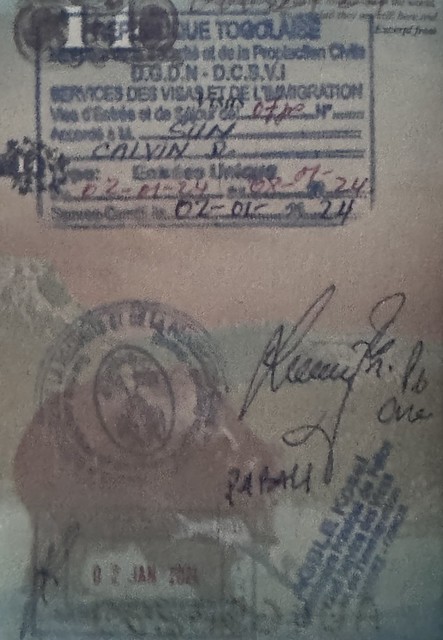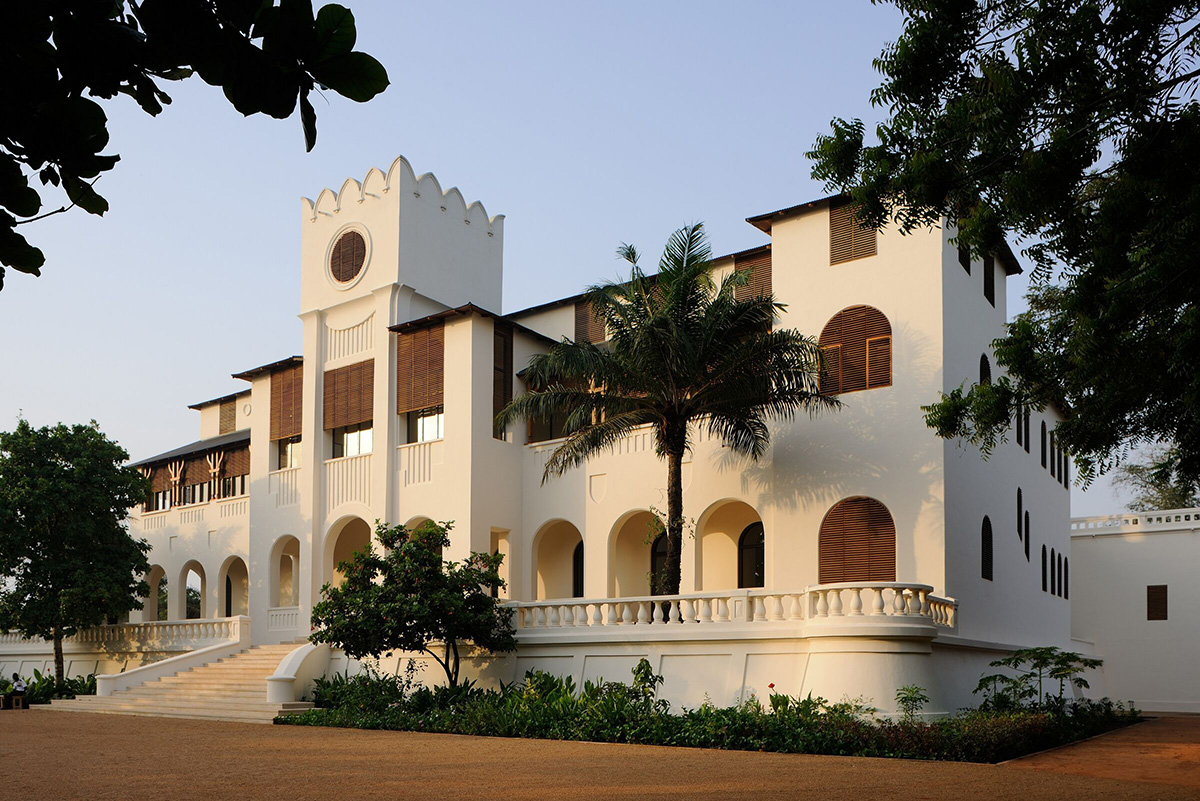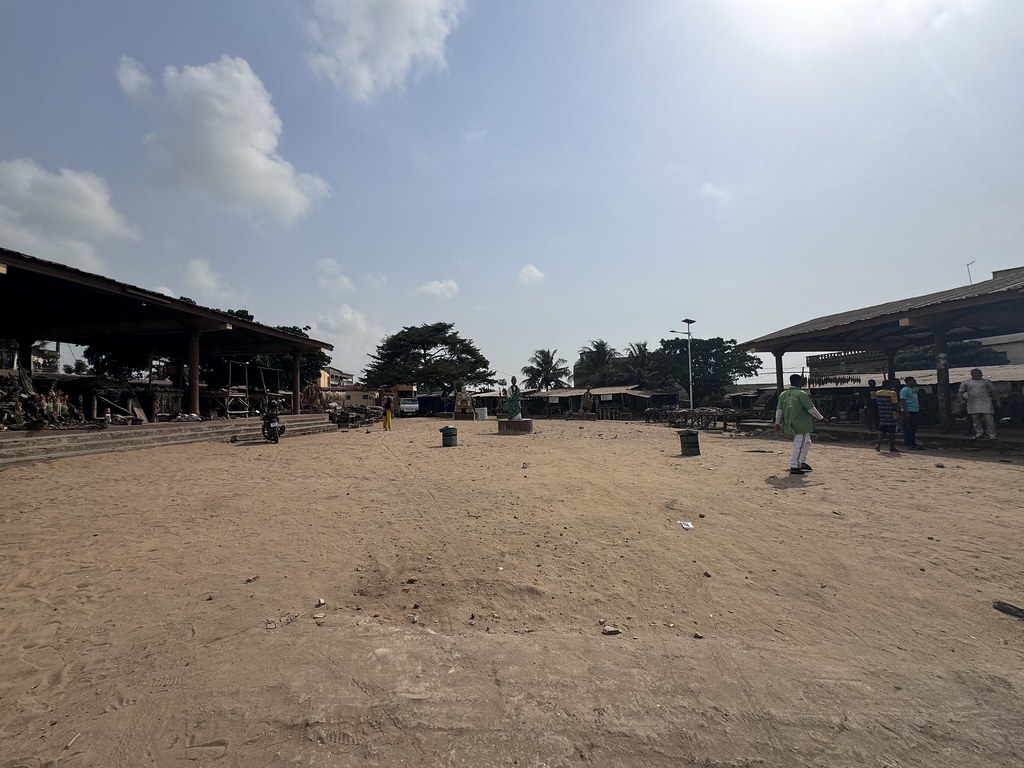After 2 days and celebrating the New Year’s in Ouidah, we left for Lomé early in the morning for the border between Togo and Benin. It’s about an hour’s drive from Ouidah.
The first part is stamping out of Benin in this foreroom:
And just like crossing from Nigeria to Benin, to stamp into the next country is just down a few doors within the same building.
Here we pulled up our e-visas that we got beforehand online.
Even though Togo’s website only allows you to select the airport as a point of entry, e-visas can work here at the overland border crossing from Benin or Ghana but you’ll have to refill out the forms (although there’s no need to pay the $40 USD again). I feel after our experience, it actually might be faster and more straightforward to do the visas on arrival route instead of getting an e-visa because of that.
Then with your stamp you can then head past Togo immigrations.
After a few searches and questions whether we were carrying any drugs outside the border, and drive on west towards capital of Lomé, we stopped at Agbodrafo, also known as “Safe Harbour” or to Europeans as Porto Seguro.
Once a port along the slave trade, it has been converted into a popular seaside resort. But if you have time, you can take a 10 minute boat ride across the lake to Togoville:
The Cathedral there was built-in 1910 and includes a shrine to the Virgin Mary that marked where she is said to have appeared on a November 7 in the early 1970s.
Next are the first two wells dug for groundwater that’s still being used today:
A statue commemorating the friendship between the German and Togo people marks the edge of the town’s main road:

Togoville and the surrounding area is a also a site of extensive voodoo practice; therefore voodoo shrines are scattered around in various parts of the city by the former royal palace.
There’s a male voodoo for “masculine” wishes and offerings:
And a female voodoo for women-specific wishes (animal blood offerings and sacrifices are poured on a volcanic rock nearby and not on this voodoo itself):
At this particular voodoo statue in the market area, if you make a wish and then make an sacrifice offering of an animal’s blood (thus what this one is covered with), you’ll get your wish to come true.

Nearby is a sacred voodoo forest where important ceremonies are held:
We then returned to the coast and paid a 20 minute visit to the House of Slaves where enslaved persons were forced to kneel and live underground from weeks to months to acclimate themselves for eventual life onboard the slave ships:
While the enslaved crawled in holes to live under the house, the slave masters would live normally in the house upstairs.
Enslaved people would be given food through a trapdown in the living room floor.
We went down to see for ourselves; up to 400-500 people were forced to live here before they would be led onto the slave ships.
The master’s bedroom feels rightfully eerie and haunted.
We then continued onwards, having a poolside dinner at a hotel residence by Lomé’s fishing harbor:
With another 30 minute’s drive we reached and settled into our lodgings at the very charming Résidence Hôtelière Océane in the city center of Lomé. It boasts a unique and nicely designed interior, even though we had to switch one of the rooms due to a flood caused by a malfunctioning air-conditioning unit.
Then with a quick check in with the group’s emotional state halfway through our road trip, we took a short walk around the area.
Although it’s a slightly dodgy neighborhood at night (both our guides and hotel owner told us not to walk in a certain direction after leaving the hotel), it may have been worth it for this photo:
We then began our city tour of Lomé the next morning after breakfast at 8:30am. Our hotel is conveniently located in Lomé’s Grand Market:
We first stopped at Monument de L’independence/Independence Monument, which commemorates Togo’s independence from France on April 27 1960, unique for a human silhouette carved within the monument.
The National Museum is within the grounds of the Independence Monument behind the conference center.
We then drove by the Artisans Village and Sacred Heart Cathedral, built in 1902 and where Pope John Paul II celebrated mass in 1985:
For a great view of the Gulf of Guinea, the Palais de Lomé or Governor’s House was built during German colonization in 1905 and includes a botanic garden. Sadly it was closed and we did not want to wait for a sketchy phone call to have them let us in.
Lomé is also arguably most known for being home to the Akodessewa Fetish Market (also known as the heart of traditional medicine):
This is the world’s largest fetish market where dead animals & skulls abound for the purpose of traditional medicine and healing practices.
A proper tour here explaining everything and to receive a blessing from a local priest costs 10,000 Western CFAs per person.
And after an hour at the market, we bid farewell to Priyanka to leave her behind in Togo as we crossed the nearby border into Accra.
![]()
- At time of posting in Lome, it was 29 °C - Humidity: 81% | Wind Speed: 14km/hr | Cloud Cover: partly cloudy but definitely hot muggy





























.jpg/2560px-Lomé_Grand_Marché_with_the_Cathédrale_du_Sacré_Coeur_(33592985581).jpg)






